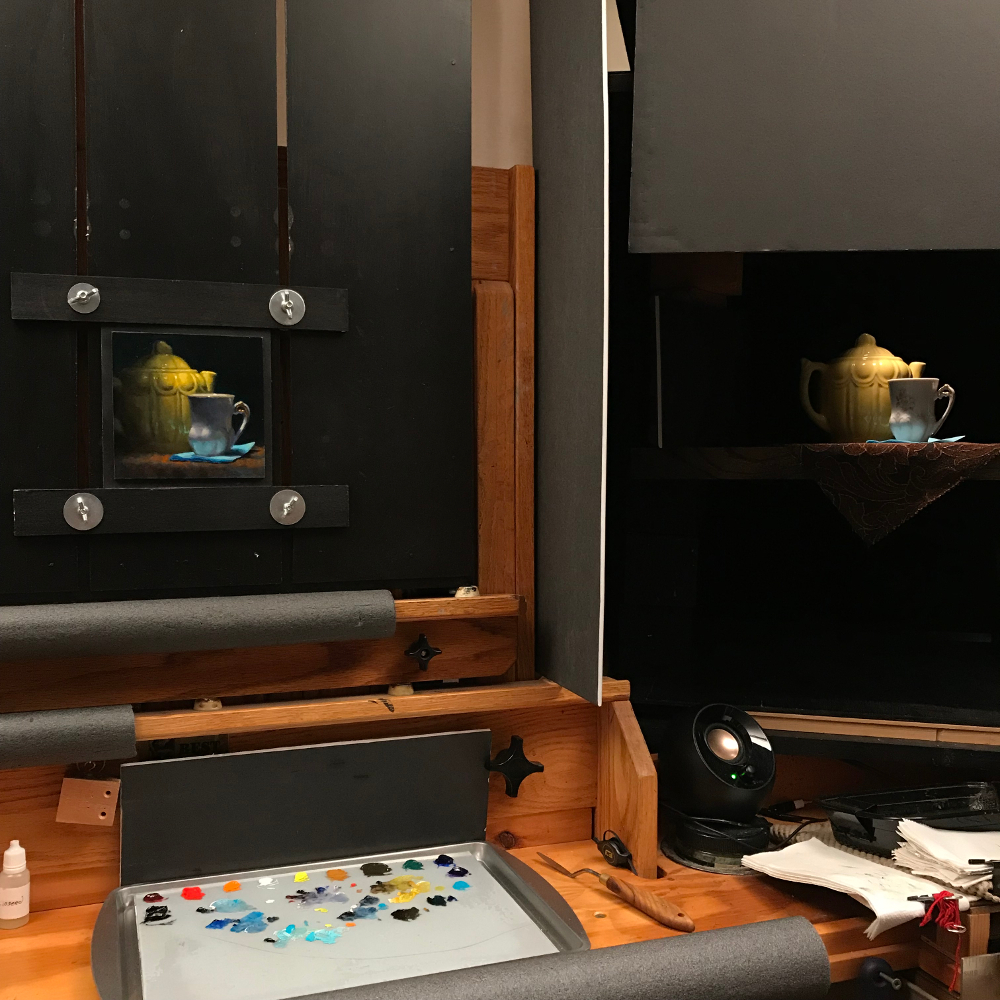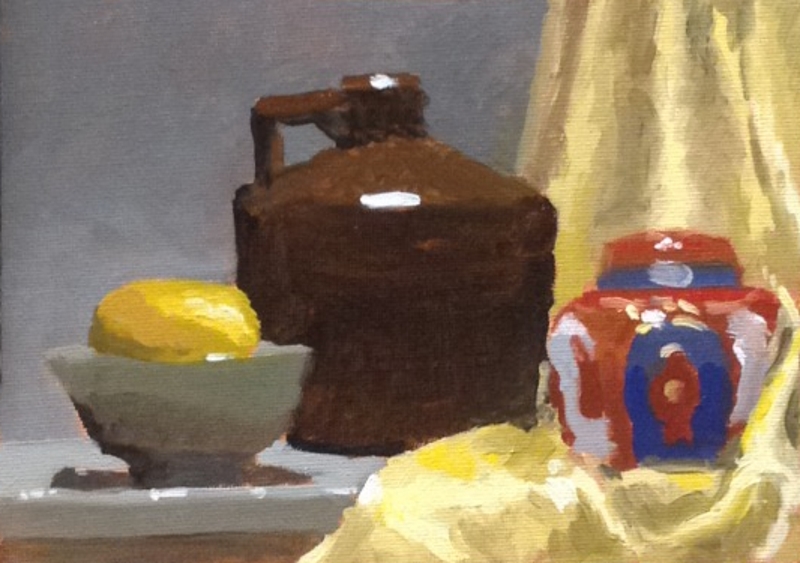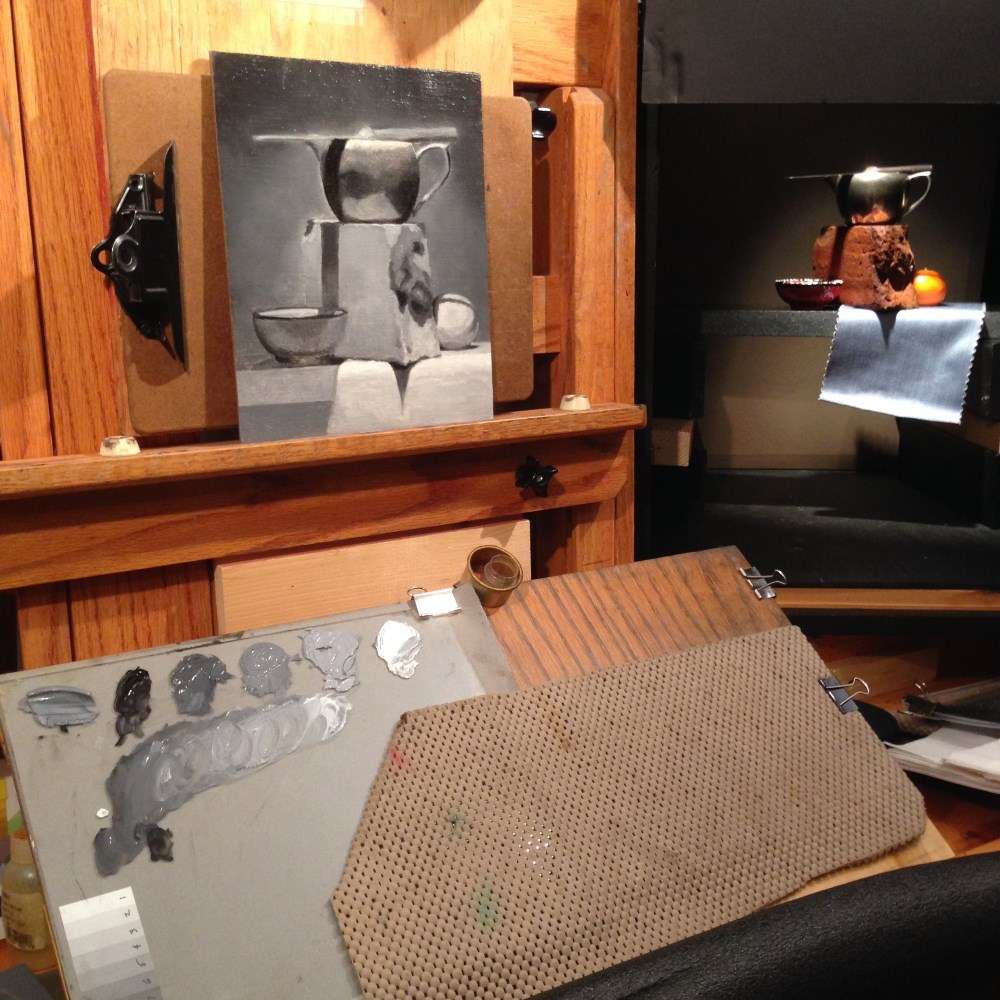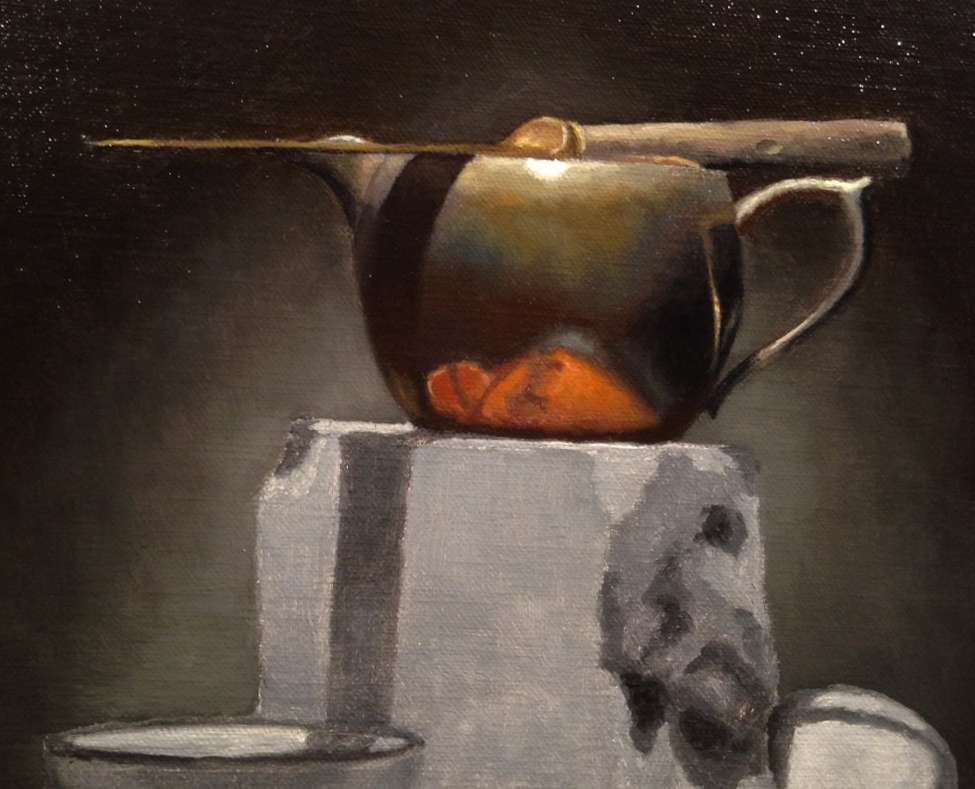How a Painting is Made The Process I Follow to Create These Paintings

These paintings are created in a slow, deliberate process spanning weeks, and sometimes months.
The objects being painted – the model – are carefully arranged in the shadowbox, and the light is fine-tuned to suit the arrangement and desired mood.
The Studies

Several studies are made of the model; thumbnail sketches in pencil and small full-color studies in oil.
The Drawing

A drawing of the main forms – and sometimes a good deal of detail – is made on the painting surface. This surface is usually a prepared wood panel or Belgian linen glued to board.
The Underpainting

An underpainting is then executed over the drawing. Underpaintings are monochromatic versions of the picture, usually done in black and white. This helps to solidify the design and clearly establish patterns of light and dark – without the added complexity of color.
The underpainting must dry for a minimum of a week before continuing. In this way, multiple paintings are always in progress.
The Color Layer

Finally, the color layer can be applied. This is what you see when you view a painting made this way. Color is applied either as an opaque covering or as a thin transparent layer – glazing – a beautiful visual effect.
Once complete, the painting must dry again, for a minimum of a month this time. When fully dry, a varnish can be applied and the painting is ready to be framed.
To see a gallery of paintings created using this process, please visit my selected paintings page.